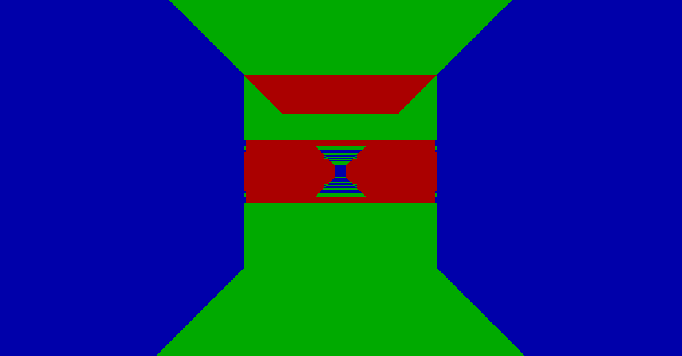Littlewolf
Raycasting howto blogs are a dime a dozen, though little about ceiling or floor casting is ever mentioned.

Wall Height
The height of the wall is calculated by taking the normal ray to the wall (in this case, the x direction), and multiplying the focal length of the field of view. The normal is clamped to a small value in case the player gets too close to the screen.
const float normal = ray.x < 1e-2f ? 1e-2f : ray.x;
const float size = 0.5f * focal * xres / normal;
The ray is defined as the difference of the vectors of the wall hit and the player:
const Ray ray = sub(wall.hit.where, hero.where);
The top and bottom of the wall can be found by subtracting half the size of the wall from the middle of the screen’s y-resolution.
const int top = (yres + size) / 2.0f;
const int bot = (yres - size) / 2.0f;
When the player is parallel to a wall the following scene is rendered:
Ceiling and Floor casting
Ceiling and floor casting require a percentage of the floor in relation to the wall height:
An expression for y:
y = yres / 2 - h / 2
Where h is the size of the wall calculated earlier. With a bit of reordering a percentage (p) expression for y is simply:
p = -h / (2 * y - yres)
As both (h) and (yres) are constant, (y) will vary and change the percentage (p). This percentage is then used to lerp the along the casted ray:
See pcast(). This handles the floor and ceiling casting.


